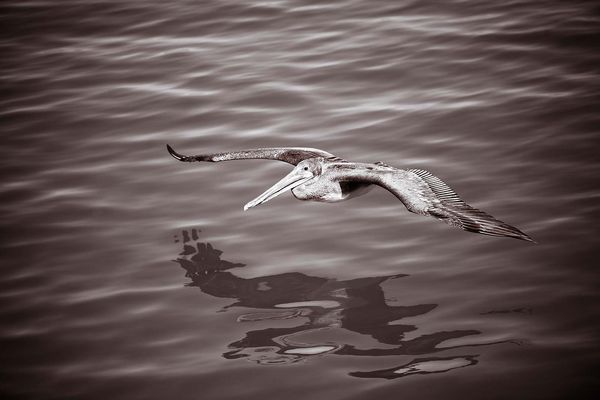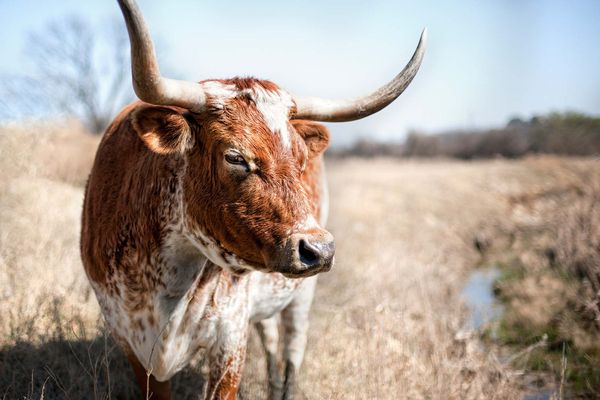Posts for: jamesbrandon
Jun 12, 2012 12:52:40 #
Indi wrote:
OK, July 4th Fireworks are rapidly approaching. Can I/we get some hints about photographing fireworks?
I use a Nikon D5100 and have the following lenses:
AF-S Nikkor 35mm f/1.8
AF-S Nikkor 50mm f/1.8
AF-S Nikkor 18-55mm f/4.0-5.6
AF-S Nikkor 55-200mm f/4.0-5.6
Sigma 150-500mm f/4.0-5.6(?)
I'm pretty sure the Sigma is not suitable.
So, which lens, and what camera settings?
I use a Nikon D5100 and have the following lenses:
AF-S Nikkor 35mm f/1.8
AF-S Nikkor 50mm f/1.8
AF-S Nikkor 18-55mm f/4.0-5.6
AF-S Nikkor 55-200mm f/4.0-5.6
Sigma 150-500mm f/4.0-5.6(?)
I'm pretty sure the Sigma is not suitable.
So, which lens, and what camera settings?
Hey there! I actually wrote a post on shooting fireworks a while back with a bunch of tips. It's really simple! Here's a link to the original post: http://james-brandon.com/nine-tips-for-photographing-fireworks/
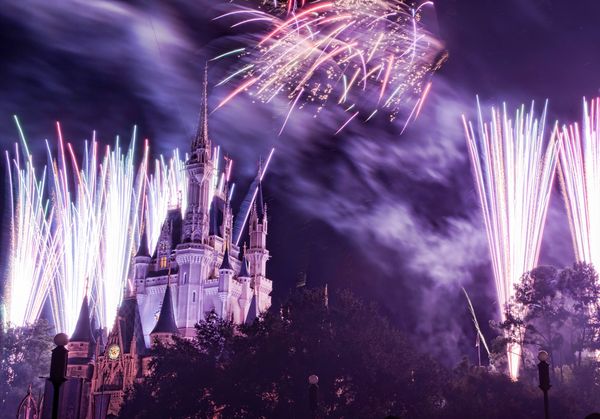
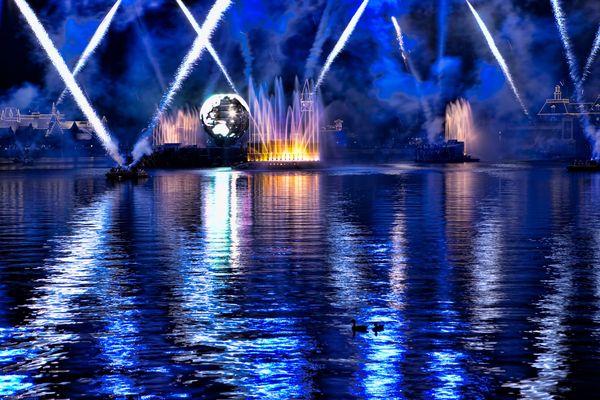
Jun 11, 2012 23:13:30 #
cecilia delacroix wrote:
A few of the sample pages posted by James Brandon ... (show quote)
hehe, thanks a ton cecilia! hope you enjoy it :-)
Jun 11, 2012 22:44:08 #
silver wrote:
quote=jamesbrandon There will always be haters ou... (show quote)
Silver you crack me up, really :-). Your biggest blunder in that last rambling was that I assume I have all the answers and that I have stopped learning. Where did you get this information? From the fact that I said you weren't worth my time? Where did I even hint that I have stopped learning or that my way is the only way? This entire conversation was happy and uplifting until you and wedding guy came in and started saying how my way was wrong :-).
Allow me to post a quote from one of my earlier posts that you obviously didn't catch ;-). "Warning to younger photographers: Experience doesn't make you talented, not even 30 years of it. Passion and a willingness to learn make you talented. The moment you start to think you're 'experienced' or 'seasoned' or better than everyone else is the moment you become unteachable. It's the moment your work starts to decline and the moment that everyone else's around you starts getting better. As for me, I'll always strive to have the attitude of an amateur. Even when I've been shooting for 30 years like our friend wedding guy ."
Take a moment to get caught up on the conversation before you go into 1000+ words worth of assumptions.
You can reply with more nonsense if you'd like but I won't read it and I won't respond to it. The rest of my posts here will be geared towards helping other photographers and getting help from them. Not wasting my time with people who are grumpy and angry at the world.
Jun 11, 2012 17:42:22 #
Tina wrote:
I have a Cannon 7D with a 70-200mm/2.8 IS lens . ... (show quote)
And now here's my two cents for Tina. Hope it helps...
Waterfowl and birds can be tricky. And getting sharp images is multi-facetted. You can do everything right in camera but if you have poor form when holding the camera you could still get soft or blurry images. So here's some tips that I think will help...
1) When hand holding with any lens (but especially a telephoto) study the way that military or law enforcement personel hold their rifles. This has been a huge help for me. Are your elbows flared out when you hold your camera? Try squeezing them in to where they are pointed at the ground. This is how they train people to hold rifles to make them steady so naturally it will work with cameras as well
2) After tucking in your elbows, rest your left elbow up against your stomach as an anchor point.
3) With a telephoto lens like the 70-200 the lens should rest in the palm of your left hand. Your left hand should support 99% percent of the weight of the camera. If you're holding the camera with your right hand that is likely the problem. The right hand should only be used to squeeze the trigger...ahem...shutter.
4) Roll your finger over the shutter. A lot of people stab at the shutter which induces camera shake. It doesn't take a lot of pressure to push the shutter in, so just ry rolling your finger over it with just enough pressure to take a picture.
----------------
Camera settings:
You're on track with the shutter speed stuff. But if you're trying to freeze a bird in action you need FAST shutter speeds. The one below was shot at 1/1250th at f/2.8 with the same lens as you mentioned. ISO was at only 100. I could have gotten faster by increasing the ISO but those settings froze the bird in place and STILL added a nice soft blur to the water behind it.
AF Point: This is where my ebook really gets into depth on this topic. For the shot below I used a single auto focus point and then used back button focus to track the bird in flight with the camera in AI-Servo mode.
Single AF helped because I could choose what to focus on instead of letting the camera guess at it. It would have likely failed several times by focusing on the water instead
Servo: This of course allowed me to track the movement of the bird and keep it in focus as long as my single AF point was over the bird.
Burst Mode: This is just to ensure the best chance of capturing just the right moment. Rather than taking one shot at a time, you increase your odds by shooting at your cameras maximum FPS rate. In my case, I was using a Canon 1Ds Mark III which shoots fairly slow at 5 fps. But I still managed to get plenty of good shots and picked the one with the best wing placement to edit.
Hope this helps :-)
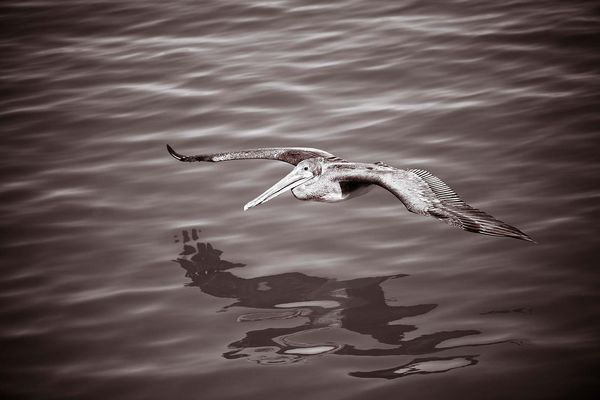
Jun 11, 2012 16:57:52 #
Photogdog wrote:
quote=Tina I have a Cannon 7D with a 70-200mm/2.... (show quote)
Love that third one! So crisp :-)
Jun 11, 2012 16:56:47 #
I didn't come here to sell my book. I came here because my book was already selling and I wanted to stop by and say thank you to Dawn for recommending it.
Canon says servo has issues with still subjects. That's true, but I can almost guarantee that your definition of a still subject isn't the same as mine.
You're a wedding photographer from the looks of it. If you think a bride sitting on a bench being photographed at f/1.4 is 'still' then that may be the whole problem right there. Your depth of field at that point is likely less than an inch deep so if your bride leans forward or moves back even a little then the focus on her eyes is blown at that point (and that's assuming YOU didn't move at all).
If you're shooting product photography, then servo isn't needed.
If you're using flash then one shot is better because the flash won't send out the infrared focus grid if you're on servo.
-----------------
And let's clear one thing up: You are the only one here who has claimed to be experienced weddingguy. Or, "VERY experienced but not an author." I never claimed to be experienced or talented or anything. I simply wrote an ebook and let my work speak for itself.
Warning to younger photographers: Experience doesn't make you talented, not even 30 years of it. Passion and a willingness to learn make you talented. The moment you start to think you're 'experienced' or 'seasoned' or better than everyone else is the moment you become unteachable. It's the moment your work starts to decline and the moment that everyone else's around you starts getting better. As for me, I'll always strive to have the attitude of an amateur. Even when I've been shooting for 30 years like our friend wedding guy :-).
Canon says servo has issues with still subjects. That's true, but I can almost guarantee that your definition of a still subject isn't the same as mine.
You're a wedding photographer from the looks of it. If you think a bride sitting on a bench being photographed at f/1.4 is 'still' then that may be the whole problem right there. Your depth of field at that point is likely less than an inch deep so if your bride leans forward or moves back even a little then the focus on her eyes is blown at that point (and that's assuming YOU didn't move at all).
If you're shooting product photography, then servo isn't needed.
If you're using flash then one shot is better because the flash won't send out the infrared focus grid if you're on servo.
-----------------
And let's clear one thing up: You are the only one here who has claimed to be experienced weddingguy. Or, "VERY experienced but not an author." I never claimed to be experienced or talented or anything. I simply wrote an ebook and let my work speak for itself.
Warning to younger photographers: Experience doesn't make you talented, not even 30 years of it. Passion and a willingness to learn make you talented. The moment you start to think you're 'experienced' or 'seasoned' or better than everyone else is the moment you become unteachable. It's the moment your work starts to decline and the moment that everyone else's around you starts getting better. As for me, I'll always strive to have the attitude of an amateur. Even when I've been shooting for 30 years like our friend wedding guy :-).
Jun 11, 2012 14:58:33 #
There will always be haters out there rpavich, so don't worry about weddingguy or silver. I know their type and it's useless trying to debate with them. They can stick to their own methods and I will not lose any sleep over it.
I know the information in the book is solid and that's all that matters to me :-). I shoot full time and use these methods every day of my life.
I know the information in the book is solid and that's all that matters to me :-). I shoot full time and use these methods every day of my life.
Jun 11, 2012 13:50:33 #
[quote=Weddingguy][quote=jamesbrandon]
Thanks for the points/issues. I'll address them quickly...
1) Do you not see the problem there? How annoying is it to have to hold a shutter button half way down in limbo the entire time you want to keep focus locked?
I remember using the 'press the shutter half way down' method. It's annoying and I promise you will never go back if you try my method and implement it for a few days to get used to it.
Another HUGE advantage of taking focusing away from the shutter button is manual focus. With my method, I don't have to ever take the lens off of auto focus, even if I want to use manual focus (like for a landscape or architecture scene). Because my shutter button doesn't change focus as well, I can dial in tack sharp focus with the lens ring and then take a picture. With your method this wouldn't work. Because as soon as you press the shutter down it would refocus. You'd instead have to go to the lens and flip it to MF and then remember to switch it back to AF when you're done.
And how many times have you taken a few blurry pictures and then realized your lens was on MF bc you forgot to switch it back?
2) That's the problem though - unless you are shooting product shots....your subject is ALWAYS moving. This becomes even more apparents when shooting portraits at f/1.2, f/1.4, etc. You can use one shot focus but your depth of field at any given time could be less than an inch deep. So although your subject 'appears' to be still and you are doing your best to stay still, you still end up with soft shots.
Don't get me wrong, I still use one shot from time to time but it's all about knowing WHEN to use each type of setting. Servo is a great method and I use it often.
Indi wrote:
quote=jamesbrandon Hey Dawn, thanks for linking t... (show quote)
Thanks for the points/issues. I'll address them quickly...
1) Do you not see the problem there? How annoying is it to have to hold a shutter button half way down in limbo the entire time you want to keep focus locked?
I remember using the 'press the shutter half way down' method. It's annoying and I promise you will never go back if you try my method and implement it for a few days to get used to it.
Another HUGE advantage of taking focusing away from the shutter button is manual focus. With my method, I don't have to ever take the lens off of auto focus, even if I want to use manual focus (like for a landscape or architecture scene). Because my shutter button doesn't change focus as well, I can dial in tack sharp focus with the lens ring and then take a picture. With your method this wouldn't work. Because as soon as you press the shutter down it would refocus. You'd instead have to go to the lens and flip it to MF and then remember to switch it back to AF when you're done.
And how many times have you taken a few blurry pictures and then realized your lens was on MF bc you forgot to switch it back?
2) That's the problem though - unless you are shooting product shots....your subject is ALWAYS moving. This becomes even more apparents when shooting portraits at f/1.2, f/1.4, etc. You can use one shot focus but your depth of field at any given time could be less than an inch deep. So although your subject 'appears' to be still and you are doing your best to stay still, you still end up with soft shots.
Don't get me wrong, I still use one shot from time to time but it's all about knowing WHEN to use each type of setting. Servo is a great method and I use it often.
Jun 11, 2012 12:46:37 #
Indi wrote:
quote=jamesbrandon Hey Dawn, thanks for linking t... (show quote)
LOL it really isn't that difficult. These cameras (Canon/Nikon) all have basically the same functions. It's just the button layouts and menu options/locations that differ. All relatively new Nikon cameras will have some form of Live View, all will have Servo focusing (Nikon calls it AF-C or Auto Focus-Continuous as opposed to AF-S for Auto Focus-Single). They should have an AF-On button in almost the same location as Canon as well. The only thing you'll need to figure out is how to go into the menu and disable focus from the shutter button so that focus is only controlled with the AF-On button and the shutter only takes pictures.
So if you've got a manual you should be able to translate all this in a matter of minutes. I know plenty of Nikonians who bought my ebook and easily implemented the tips and tricks regardless of camera type.
If you have a specific question about something you get stuck on, I can see what I can do to answer the question but unfortunately I can't go an write an entirely different ebook from a Nikon perspective :-(
Jun 11, 2012 12:17:16 #
Hey Dawn, thanks for linking to my ebook! My notifications have been going nuts this morning so I'm guessing quite a few of you have picked up a copy :-).
I put my heart and soul into that book and I truly believe it will help just about anyone get sharper images. I know several other professional photographers who don't even know about some of the techniques I go over in the ebook!
Thanks again and I'll keep my eye on this thread in case anyone has any questions. Cheers!
And here are a few images that are in the book, enjoy :-)
I put my heart and soul into that book and I truly believe it will help just about anyone get sharper images. I know several other professional photographers who don't even know about some of the techniques I go over in the ebook!
Thanks again and I'll keep my eye on this thread in case anyone has any questions. Cheers!
And here are a few images that are in the book, enjoy :-)
